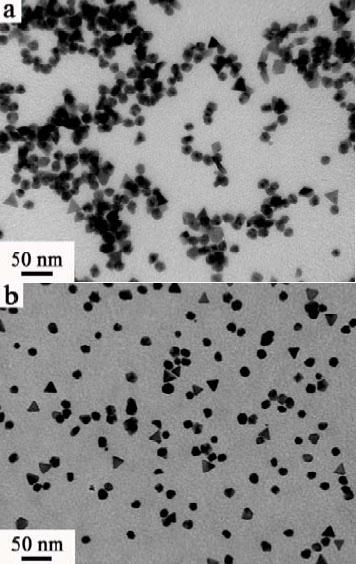The first-ever glimpse into the workings of nanocatalysts could lead to improved pollution control and more efficient fuel cell technologies.

The first-ever glimpse into the workings of nanocatalysts could lead to improved pollution control and more efficient fuel cell technologies. Scientists from the US Department of Energy observed catalysts that are able to organize themselves in response to various gases swirling around them - similar to a chameleon that changes its colors depending on its environment.
Using a state-of-the-art spectroscopy system at Berkeley Lab, the team observed, for the first time in the world, how nanoparticles, composed of two catalytic metals, change their exact composition in the presence of different reactants. Until now, the scientists had to rely on photographic images of the catalysts taken before and after the reaction - never during it.
This new "window" of times could give scientists the ability to develop cheaper and more efficient, tunable catalysts to drive everyday chemistry, such as reactions responsible for detoxifying pollutants, injecting hydrogen into fuel cells, and new methods of refining fuels. It will also be able to speed up the development of catalysts that can wash out all the substances in the reaction mixture except for the desired product, the quality mark of "green chemistry" in which a minority of polluting by-products is obtained.
"Now we can dream," says Gabor Somorjai, a well-known surface scientist and catalyst expert from UC Berkeley's chemistry department. He conducted the study together with Miquel Salmeron, a pioneer in the field of microscopy who helped obtain the findings of this study.
"With the help of watching the changes that occur on the catalysts in real time, we will be able to design "smart" catalysts in the future that will be able to change according to the progress of the reaction," notes Somorjai.
Catalysts, which are substances that speed up chemical reactions, are complex and valuable at the same time. They are essential for the production of many important industrial chemicals. They also play a significant role in environmental chemistry, with the famous example of a catalytic converter that reduces pollutant emissions from vehicle exhausts.
Due to their importance, researchers all over the world are trying to better understand how they work and how they can be improved. However, until now, nanoscale catalysts could only be observed before or after the reaction. The crucial step - how the catalyst changes during the reaction - remains open to guesswork.
And this is a serious teacher. As the researcher explains, this is similar to trying to get to know the entire course of a person's life by watching his childhood period and immediately after that jumping to the period of being an elderly person. The occurrence between these times is extremely important, but also extremely difficult to decipher by observing two separate and distant phases.
"It's hard to tune the catalyst to do exactly what you want it to do unless you know how it changes during the reaction," adds Salmeron. "Thanks to our research, for the first time it is possible to observe exactly the changes that the catalyst undergoes during its activity, and not just before and after."
Obtaining this new advantage required combining the expertise of both researchers Somorjai and Salmeron together. Initially, they had to work on a nanometer scale, which is the scale at which most catalysts work. Using techniques developed in his laboratory, Somorjai synthesized nanoparticles composed of common catalytic metals. Some of the particles were composed of rhodium and palladium and others of platinum and palladium.
In the next step, in order to observe the changes that occur on these bimetallic catalysts in the presence of the reactants, they used one of the only spectroscopy devices in the world that allow scientists to examine catalytic and biological phenomena in their natural environment, that is - at atmospheric pressures and in the presence of various chemicals.
The device, one of its kind, was developed by Salmeron and his colleagues and is located in the Advanced Laboratory for Light Sources at Berkeley. Similar to all spectroscopy methods, it identifies elements by detecting their unique spectral signals. However, unlike most, the photoelectron spectroscopy system works at pressures and environments similar to those found in everyday phenomena, instead of the requirements for a carefully controlled vacuum.
Using this system, the researchers were able to observe, in real time, how the bimetallic nanoparticles change their composition when exposed to different gases, such as nitrogen oxide, carbon monoxide and hydrogen. In the presence of certain reagents the rhodium rises to the surface of the nanoparticle, while in the presence of other reagents the palladium rises.
"With the change in the type of gas, we observed the rise of various metals to the surface of the nanoparticle, which is the area of the catalyst where the chemical reactions take place," explains the researcher. With this information, the scientists are able to develop nanoparticle catalysts and reagents that will be designed according to their requirements and that will lead to obtaining the desired product with the highest efficiency, whether it is in the fields of fuel or in the fields of cleaning emissions. For example, researchers will be able to construct bimetallic nanoparticle catalysts in which one of the metals rises to the surface and is active in it in the initial stage of the reaction and another metal will rise to it in the later stage. The goal is to ensure a situation where the most active metal will be located on the surface of the catalyst exactly at the moment it is needed. With this method, it will be possible to get the desired product quickly and cheaply.
